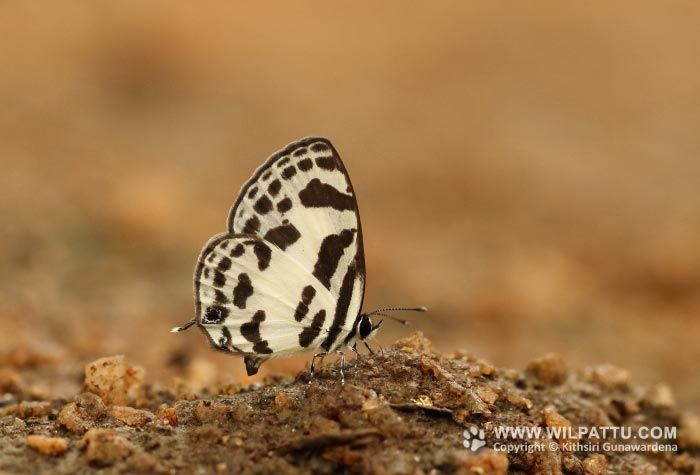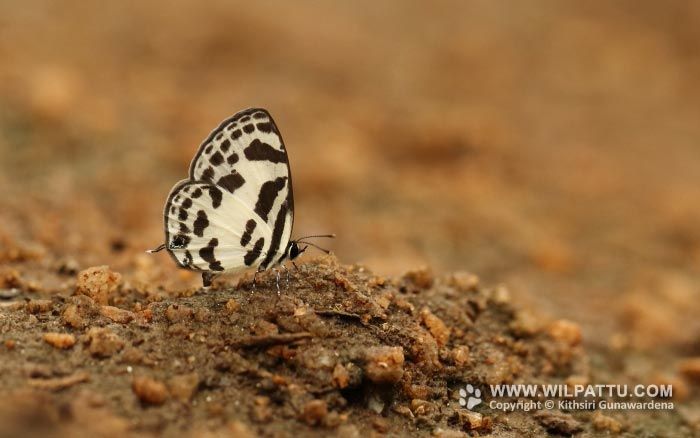
Butterflies ‹‹ Go Back
This butterfly belongs to the Lycaenide family. It is not a commonly seen butterfly but is distributed through out the island up to the mid hills. Other than in Sri Lanka this species is also native to India, Myanmar, Andaman & Nicobar Islands, Thailand, Laos, Vietnam, the Hinan province in China, Malayan peninsula, Singapore, Sumatra, Java, Borneo, Philippines, Palawan and Sulawesi.
The conservation status of this species is regarded as Least Concerned (National Red List 2012).
This is a species protected under the Fauna and Flora Protection Ordinance as amended by Act No. 22 of 2009.
I have seen this butterfly at in the wet zone at Meethirigala and in the intermediate zone at Nilgala and Arankele. In the dry zone I have seen it at Anavilundawa.
The females of this species lays their eggs on Heen Eraminiya Ziziphus oenoplia, which is a common species, found in most dry and intermediate forested areas in the country.
Like all the other Pierrot butterflies this species also flys very close to the ground and would often settle down to feed on nutrients from animal droppings.
This is a butterfly that would test your patients if your keen to get a ground level photo, which is the standard method of obtaining a pleasing image of butterflies that settle on the ground. The best method of photographing such a butterfly is to watch until it settles on the ground. This may take a minute or as long as 15 minutes or even longer. Upon the butterfly becoming stationery don’t rush towards it but permit it to commence feeding. Lie flat on the ground and try to drag your self closer to the butterfly. The distance between you and the butterfly will depend on the lens you use. If you have a macro lens the best shots will require getting as close as possible.
Even though the above mentioned host plant is very common in most parts of Wilpattu it is not a commonly seen species in the park. My first sighting of this species from Wilpattu was at the Hikkgoda tank, having entered the park from the Thanthirimale entrance.


